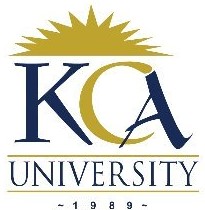 UNIVERSITY EXAMINATIONS: 2018/2019
UNIVERSITY EXAMINATIONS: 2018/2019
EXAMINATION FOR THE DEGREE OF BACHELOR OF SCIENCE IN
INFORMATION TECHNOLOGY/ BACHELOR OF SCIENCE IN
INFORMATION AND COMMUNICATIONS TECHNOLOGY
BIT 3107/BCT 3101: WIRELESS NETWORKS TECHNOLOGIES
FULL TIME/PART TIME/DISTANCE LEARNING
DATE: APRIL, 2019 TIME: 2 HOURS
INSTRUCTIONS: Answer Question One & ANY OTHER TWO questions.
QUESTION ONE [30 MARKS]
a) In the 2G mobile phone network, a user engaged in a conversation has an outgoing
message on one channel and an incoming message on another channel.
(i) State the UPLINK frequency band and DOWNLINK frequency band as used in
the GSM900 system in Kenya. 2 Marks
(ii) A user is communicating on channel 898.5MHz uplink channel. Determine the
downlink channel. 2 Marks
b) Explain the history and at least four (4) prevalent applications of Bluetooth.
8 Marks
c) Describe the three basic capabilities of mobile IP. 6 Marks
d) Describe the major differences between active and passive tags in the RFID system
4 Marks
e) In relation to WLANs:
(i) What is an SSID? 1 Mark
(ii) How much overlap is suggested between wireless cells? 1 Mark
(iii) How much overlap is suggested between an access point and an access
point serving as a repeater? 1 Mark
(iv) Which service set is associated to the ad hoc mode? 1 Mark
f) WLAN clients have the ability to shift data rates while moving. Explain the significance
of this in relation to IEEE 802.11b standard 4 Marks
QUESTION TWO [20 MARKS]
a) Compare and contrast Bluetooth and Wi-Fi in networking. 6 Marks
b) (i) If the time required for the completion of one sine wave is 0.001 s, what is the
frequency of the wave? If the wave’s period is reduced to 0.0005 s, what is its new
frequency? 2 Marks
(ii) Assume a communications channel with an intended capacity of 60 Mbps. The
bandwidth of the channel is 4 MHz. Determine the signal-to-noise ratio required in order
to achieve the specified capacity. 4 Marks
c) Explain the registration process of a mobile device on a foreign network. 4 Marks
d) Explain the operation of CSMA/CA in wireless LANs 4 Marks
QUESTION THREE [20 MARKS]
a) Fill the table below showing the comparison of Bluetooth, infrared and Wireless LAN of
IEEE 802.11b 6 Marks
Ideal Application Data rates (Mbps)
Infrared
Bluetooth
IEEE 802.11b
b) Briefly describe the following types of noise in data communications:
(i) Thermal noise 2 Marks
(ii) Inter-modulation Noise 2 Marks
(iii) Crosstalk 2 Marks
c) Compare and contrast FDMA and TDMA. 6 Marks
d. Why can’t we use CSMA/CD in WLANs? 2 Marks
QUESTION FOUR [20 MARKS]
a) The transmission of radio waves is influenced by three major factors. Describe these
factors. 6 Marks
b) State two advantages and two disadvantages of the GEO satellite orbit. 4 Marks
c) Much like a traditional wired LAN, a WLAN is a grouping of computers and peripheral
devices that share a common communications backbone. As is implied by the name, a WLAN
allows users to connect to the LAN wirelessly via radio transmission. Describe any three most
common components of a WLAN. 6 Marks
d) State four rules that apply to radio frequency transmission in relation to frequency, range
and data rate. 4 Marks
QUESTION FIVE [20 MARKS]
a) Discuss the UNII-1, UNII-2 and UNII-3 in relation to IEEE 802.11a wireless LAN
communication highlighting the frequency bands for each, the number of channels and key
characteristics. 6 Marks
b) Wireless Application Protocol (WAP) is the de facto world-wide standard for providing
Internet communications and advanced telephony services on digital mobile phones, pagers,
PDAs and other wireless terminals. With the aid of a diagram, explain how this works.
8 Marks
c) An antenna is defined as an electrical conductor or system of conductors that are used for
transmitting and receiving electromagnetic energy. Briefly discuss the three (3) main types of
antennas. 6 Marks
